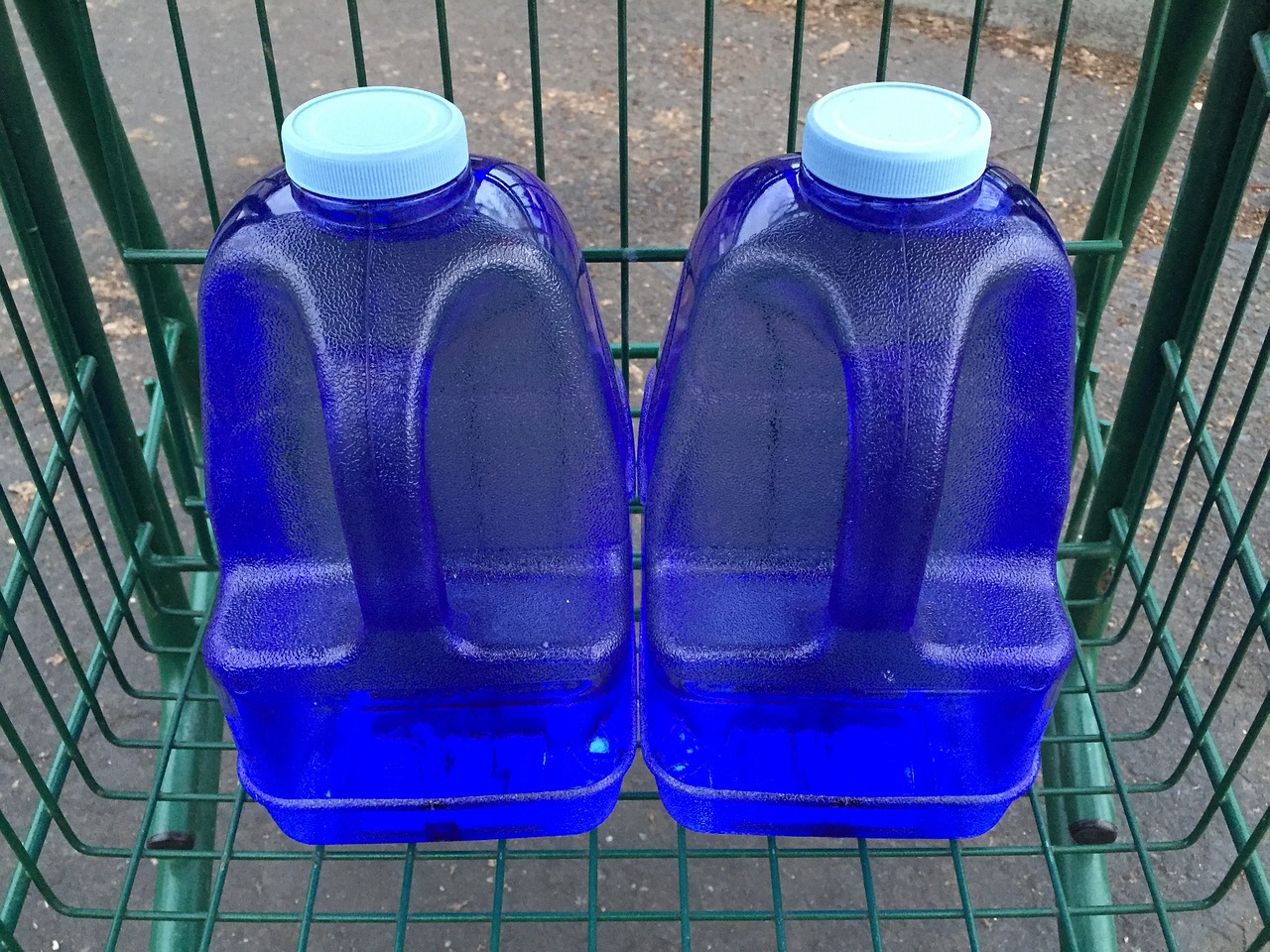Gallons to Cubic Feet Converter - Convert gallons (gal) to cubic feet (cu ft).
Result:
Our gallons to cubic feet converter allows you to quickly convert cubic feet to gallons. It's a simple tool for anyone who needs to convert cubic feet to gallons. On this page, we'll talk about how to convert gallons to cubic feet, understand how to use this gallons to cubic feet converter, and answer some common questions about this conversion.
US and UK Gallon Differences
The term "gallon" refers to a unit of volume measurement, but it can mean different amounts depending
on whether you're using the US or UK system.
A US gallon is exactly 231 cubic
inches or 3.785 liters (L), while a UK gallon is slightly larger at 4.546 L. So, a
UK gallon can hold more liquid than a US gallon.

Gallons vs Cubic Feet
Another common unit for measuring volume is the cubic foot (cu ft or
ft³). A cubic foot is the amount of space that would fit inside a box that's 1 foot
long, 1 foot wide, and 1 foot tall. To convert between gallons and cubic feet, we need to know how
many cubic feet are in one gallon.
Here are the conversion factors:
- 1 US gallon = 0.133681 cubic feet
- 1 UK gallon = 0.160544 cubic feet
To change gallons to cubic feet, you multiply the number of gallons by the appropriate conversion factor above.
Examples
Let's say you want to know how many cubic feet are in 5 gallons.
For 5 US gallons:
5 gallons x 0.133681 cubic feet/gallon = 0.668405 cubic feet
For 5 UK gallons:
5 gallons x 0.160544 cubic feet/gallon = 0.80272 cubic feet
US Gallons to Cubic Feet Table
| Gallons (US) | Cubic Feet |
|---|---|
| 1 | 0.133681 |
| 2 | 0.267362 |
| 3 | 0.401043 |
| 4 | 0.534724 |
| 5 | 0.668405 |
| 6 | 0.802086 |
| 7 | 0.935767 |
| 8 | 1.069448 |
| 9 | 1.203129 |
| 10 | 1.336810 |
Other Similar Calculators
Check out other calculators that are similar to this one.
FAQ
What is half of a gallon called?
Half of a gallon is equal to 2 quarts. A quart is one-fourth of a gallon.
How many cups are in a gallon?
There are 4 quarts in a gallon, and 4 cups in a quart. So there are 16 cups in 1 gallon.
If I have 10 cubic feet, how many US gallons is that?
To convert 10 cubic feet to US gallons, divide 10 by 0.133681 (the cubic feet in 1 US gallon).
10 ÷ 0.133681 = 74.8 US gallons
Is a liter bigger than a US gallon?
No, a liter is smaller than a US gallon. There are about 3.785 liters in 1 US gallon.
Step-by-Step Conversion Examples
Example 1: Pool Volume Calculation
Problem: You have a rectangular pool that's 20 feet long, 10 feet wide, and 5 feet deep. How many gallons does it hold?
Step 1: Calculate volume in cubic feet: 20 × 10 × 5 = 1,000 cubic feet
Step 2: Convert to US gallons: 1,000 ÷ 0.133681 = 7,480 gallons
Answer: The pool holds approximately 7,480 US gallons
Example 2: Fuel Tank Capacity
Problem: A cylindrical fuel tank has a diameter of 6 feet and height of 8 feet. What's its capacity in gallons?
Step 1: Calculate volume: π × r² × h = 3.14159 × 3² × 8 = 226.2 cubic feet
Step 2: Convert to US gallons: 226.2 ÷ 0.133681 = 1,692 gallons
Answer: The tank capacity is approximately 1,692 US gallons
Industrial and Commercial Applications
Volume conversion between gallons and cubic feet is essential in many industries for capacity planning, material calculations, and regulatory compliance.
Water Storage and Treatment
Municipal water systems and treatment plants require accurate volume calculations for capacity planning and chemical dosing.
- Water towers: Typically 50,000-1,000,000 gallons capacity
- Treatment basins: Volume determines retention time
- Storage tanks: Emergency water supply calculations
- Distribution systems: Pipeline capacity planning
- Chemical dosing: Precise volume-based treatments
- Flow rate calculations: Gallons per minute to cubic feet per second
Oil and Gas Industry
Petroleum products are measured in both gallons and cubic feet depending on the application and regulatory requirements.
- Storage tanks: Crude oil and refined products
- Pipeline capacity: Transportation volume calculations
- Refinery processes: Processing unit capacities
- Fuel dispensing: Retail and commercial fuel stations
- Environmental compliance: Spill volume assessments
- Natural gas: Conversion between liquid and gas volumes
Swimming Pool and Spa Calculations
Pool and spa professionals rely on accurate volume calculations for chemical treatment, heating requirements, and equipment sizing.
| Pool Type | Typical Dimensions | Volume (Cubic Feet) | Volume (US Gallons) | Chemical Requirements |
|---|---|---|---|---|
| Residential Pool (Small) | 12' × 24' × 4' | 1,152 cu ft | 8,618 gallons | 2-3 lbs chlorine/week |
| Residential Pool (Large) | 16' × 32' × 5' | 2,560 cu ft | 19,148 gallons | 4-6 lbs chlorine/week |
| Commercial Pool | 25' × 50' × 6' | 7,500 cu ft | 56,093 gallons | 15-25 lbs chlorine/week |
| Olympic Pool | 164' × 82' × 6.6' | 88,927 cu ft | 665,000 gallons | Professional management |
| Hot Tub/Spa | 8' × 8' × 3' | 192 cu ft | 1,436 gallons | Daily chemical monitoring |
Construction and Building Applications
Construction projects require volume calculations for concrete, water storage, and material planning. Understanding gallon-to-cubic-foot conversions helps in cost estimation and resource planning.
Concrete and Materials
Concrete mixing and material calculations often involve volume conversions for accurate project planning.
- Ready-mix concrete trucks: 8-10 cubic yards capacity
- Water requirements: ~30 gallons per cubic yard
- Admixture dosing: Volume-based calculations
- Curing water: Surface area and depth considerations
Excavation and Fill
Earthwork projects require volume calculations for material removal and backfill requirements.
- Excavation volumes: Cubic yards to truck loads
- Soil compaction: Volume change factors
- Water content: Gallons per cubic foot of soil
- Drainage calculations: Runoff volume estimates
HVAC and Plumbing
Building systems require volume calculations for capacity sizing and efficiency optimization.
- Water heater capacity: Gallons vs. space requirements
- Pipe sizing: Flow rate and volume relationships
- Storage tanks: Space planning and capacity
- Cooling systems: Chilled water volume calculations
Agricultural and Irrigation Systems
Agriculture relies heavily on water volume calculations for irrigation planning, storage design, and crop management. Converting between gallons and cubic feet helps optimize water usage and system design.
Irrigation System Calculations
Sprinkler systems: Coverage area and water application rates
Drip irrigation: Flow rates and emitter spacing calculations
Storage ponds: Seasonal water storage requirements
Pump sizing: Gallons per minute to system pressure requirements
Fertilizer injection: Concentration and volume calculations
Environmental and Regulatory Compliance
Environmental regulations often specify limits and requirements in various volume units, making conversion knowledge essential for compliance.
| Regulatory Area | Typical Requirements | Volume Units | Conversion Importance |
|---|---|---|---|
| Wastewater discharge | Daily flow limits | Gallons per day | Treatment plant sizing |
| Stormwater management | Retention pond capacity | Cubic feet, acre-feet | Design compliance |
| Underground storage tanks | Leak detection thresholds | Gallons per hour | Environmental protection |
| Spill response | Containment volume | Gallons, cubic yards | Emergency planning |
| Air emissions | Volatile organic compounds | Pounds per gallon | Emission calculations |
Measurement Accuracy and Precision
Measurement Tools
Different applications require varying levels of measurement precision, affecting the choice of measurement tools and methods.
- Tank gauging systems: ±0.1% accuracy for custody transfer
- Flow meters: ±0.5-2% depending on type and application
- Level sensors: Ultrasonic, radar, and pressure-based
- Manual measurements: Dipsticks and measuring tapes
- Calibrated vessels: Reference standards for accuracy
Temperature and Pressure Effects
Volume measurements can be affected by temperature and pressure changes, particularly for liquids and gases.
- Thermal expansion: Liquids expand with temperature increase
- Standard conditions: 60°F for petroleum products
- Pressure compensation: Gas volume corrections
- Density variations: Temperature-dependent fluid properties
- Calibration standards: Reference conditions for accuracy
Common Conversion Mistakes and Solutions
| Common Mistake | Incorrect Result | Correct Method | Correct Result |
|---|---|---|---|
| Confusing US and UK gallons | 20% error in volume | Specify gallon type clearly | Accurate conversion |
| Using wrong conversion factor | 7.48 instead of 0.133681 | Gallons = cu ft ÷ 0.133681 | Correct gallon calculation |
| Forgetting to account for tank shape | Rectangular formula for cylinder | Use appropriate volume formula | Accurate tank capacity |
| Not considering liquid level | Full tank capacity assumed | Measure actual liquid depth | Actual volume present |
| Ignoring temperature effects | Standard volume at all temperatures | Apply temperature correction | Temperature-corrected volume |
Advanced Volume Calculations
Complex applications often require sophisticated volume calculations beyond simple geometric shapes, involving integration and advanced mathematical methods.
Irregular Tank Shapes
Many industrial tanks have complex geometries requiring specialized calculation methods.
- Horizontal cylindrical tanks with dished ends
- Spherical and spheroidal tanks
- Conical bottom tanks
- Custom fabricated vessels
Partially Filled Vessels
Calculating volume in partially filled tanks requires understanding of geometric relationships.
- Segmented circle calculations
- Strapping table development
- Level-to-volume conversion charts
- Computer modeling and simulation
Flow Rate Conversions
Dynamic volume calculations involve time-based flow rates and cumulative volumes.
- Gallons per minute to cubic feet per second
- Volumetric flow rate calculations
- Pump performance curves
- System hydraulics and pressure drop
Historical Context and Standards Development
The evolution of volume measurement standards reflects the need for international trade standardization and scientific precision.
Ancient Times: Volume measurements based on available containers (amphora, barrel)
Medieval Period: Regional variations in gallon sizes based on local trade customs
1824: Imperial gallon standardized in Britain at 277.42 cubic inches
1893: US gallon officially defined as 231 cubic inches
1960: International System of Units (SI) promotes liter as standard
Present: Coexistence of multiple systems requiring conversion knowledge
Frequently Asked Questions - Technical Topics
Related Volume and Capacity Calculators
Cubic Feet to Gallons Converter: Reverse conversion for tank and container capacity calculations.
Liters to Gallons Converter: International volume conversions for global applications.
Tank Volume Calculator: Calculate capacity for cylindrical, rectangular, and spherical tanks.
Pool Volume Calculator: Specialized calculations for swimming pools and spas.
Flow Rate Converter: Convert between different flow rate units for hydraulic systems.
Fuel Consumption Calculator: Analyze fuel efficiency and consumption rates.
The key things to remember are the different sizes of the US and UK gallons, how to convert between gallons and cubic feet, and common gallon fraction names like quarts and cups. Converting between units allows you to better understand and communicate volume measurements.
Find Calculator
Popular Calculators
Other Calculators
